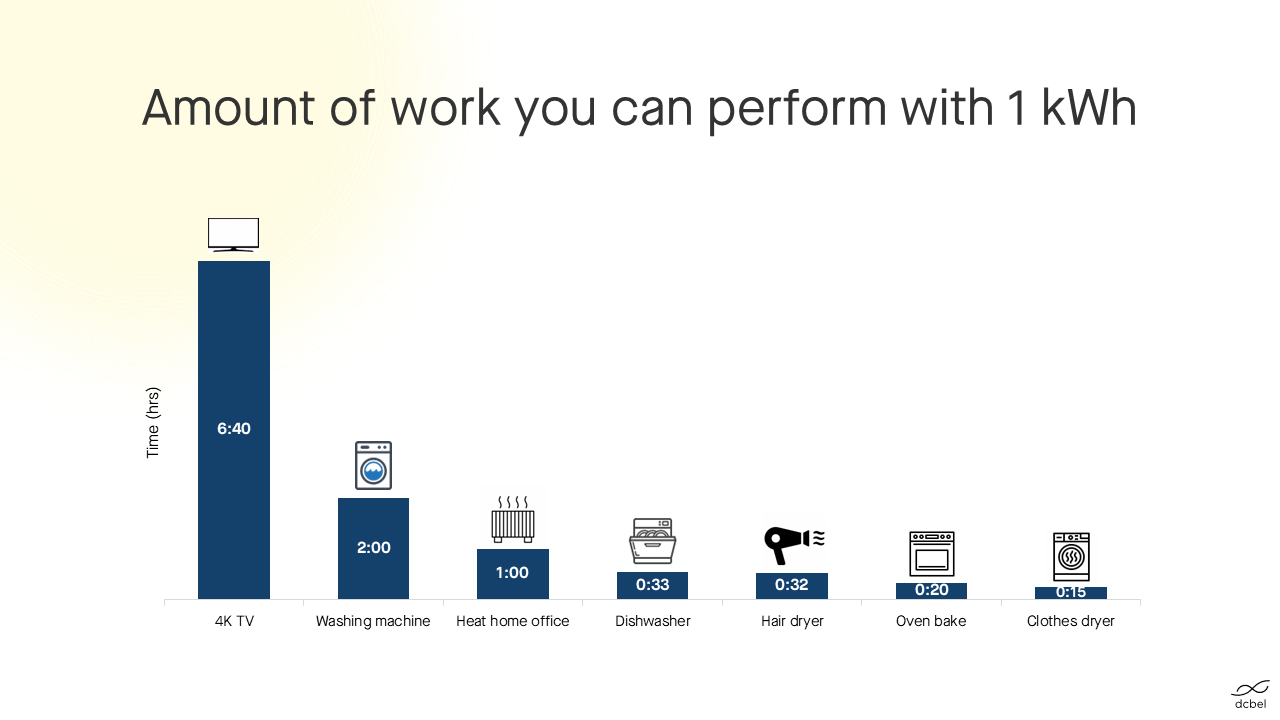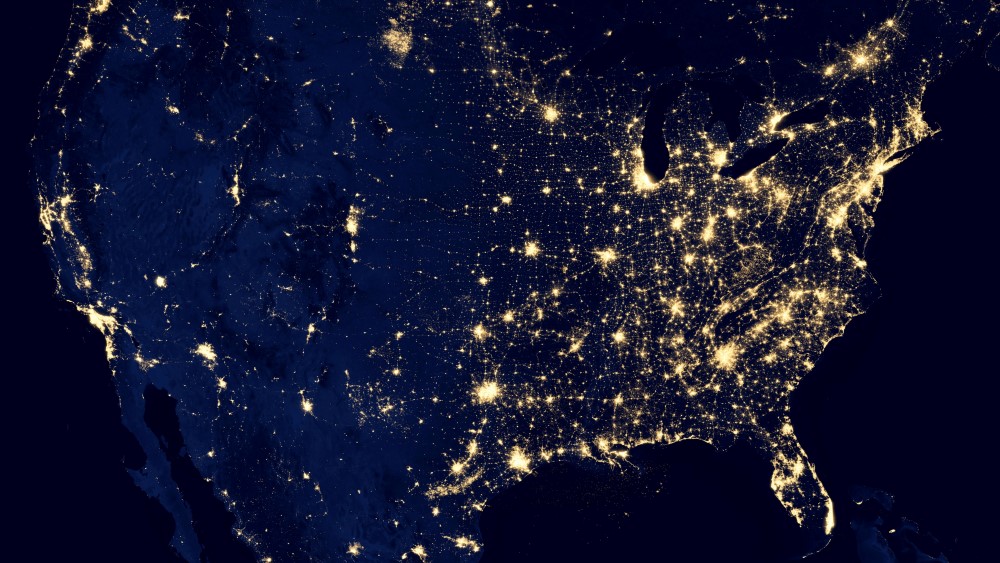As renewable energy gains momentum around the world, terms related to electricity are moving closer to the foreground of public consciousness. Words like “kilowatt” will soon become as widely used as “horsepower” and “gigabytes.” According to the Solar Energy Industries Association, around one in eight American homes will have solar panels installed by 2030. And the electric vehicle industry shows no signs of slowing down: the Biden administration wants 50% of new cars sold in 2030 to be zero-emission. The kilowatt is set to become a vital component of your life. Here’s a quick guide on how to conceptualize this fundamental unit of home energy.
The watt is a basic unit of energy that provides a good starting point to quantify electricity, in the same way that the byte is a good springboard to discuss computer memory. There are kilobytes, megabytes and gigabytes that allow us to discuss memory in larger, more practical terms. Those prefixes translate directly over to watts: a kilowatt (kW) equals 1,000 watts, a megawatt (MW) represents one million watts and a gigawatt (GW) refers to one billion watts.
When talking about personal energy usage, you’ll probably never reference a gigawatt, which according to the EPA is equivalent to the power generated by 412 utility-scale wind turbines.
Some small appliances have power ratings of just a few dozen watts. An immersion blender may require 180 watts to operate, while a microwave oven may be rated at 1,500 watts and a water heater could be rated at 4,500 watts.
The ratings described above only tell half the story. Solar and EV users will be most interested in figures expressed in kilowatt-hours (kWh), a composite unit of energy equal to one kW of power sustained for one hour.
By using a formula to determine the amount of kWh you consume, you can calculate how much your utility company will charge you, how long it would take to charge an EV battery and how many solar panels you need on your rooftop.
Let’s use the microwave oven mentioned earlier as an example. First, express the appliance’s power rating in kW.
1500 ÷ 1000 = 1.5 kW
Next, simply multiply that number by the number of hours you use the appliance. In this case, let’s assume it’s used for a total of six hours per year.
1.5 kW × 6 hours = 9 kWh per year
This means that if you pay the national average of around 14 cents per kWh, your microwave usage will add $1.26 to your yearly utility bill.

Here is roughly the amount of work you can perform with one kilowatt-hour:
Run a pedestal fan for 18 hours
Enjoy 4K television for 6 hours and 40 minutes
Play the latest PS5 release for 5.5 hours
Operate a washing machine for 2 hours
Run a midsized window air conditioner for 67 minutes
Vacuum for 1 hour
Heat your home office in winter for 1 hour
Operate a toaster for 50 minutes
Use a dishwasher for 33 minutes
Use a hair dryer for 32 minutes
Stir-fry in a large wok for 25 minutes
Oven bake for 20 minutes
Operate a clothes dryer for 15 minutes
Drive for 3.7 miles in a 2022 Nissan Leaf
A clean energy revolution is currently underway. The deliberate shift away fossil fuels is coinciding with a “prosumer” movement that sees people producing their own energy. Knowing the fundamentals of electricity measurement will make it easier to fathom a switch to residential solar and EVs. Seeing power through the lens of kilowatt-hours is a great first step to take on a clean energy journey.
Sources:
https://www.caranddriver.com/news/a37232112/biden-target-50-percent-evs-2030/
https://www.energy.gov/eere/articles/how-much-power-1-gigawatt
https://www.saveonenergy.com/energy-resources/energy-consumption/
https://www.energy.gov/energysaver/estimating-appliance-and-home-electronic-energy-use
https://energyusecalculator.com/electricity_toaster.htm
https://www.canstarblue.com.au/electricity/portable-fans-running-costs/
https://blog.firstchoicepower.com/energy-education/how-much-energy-does-my-hair-dryer-use/
https://www.directenergy.com/learning-center/how-much-energy-does-oven-and-electric-stove-use
https://homeguides.sfgate.com/many-watts-electric-range-pull-87939.html
https://energyusecalculator.com/electricity_clotheswasher.htm
https://www.finishdishwashing.ca/en/benefits-of-dishwasher/how-energy-efficient-is-dishwasher/
https://www.nrdc.org/experts/noah-horowitz/latest-game-consoles-environmental-winners-or-losers
https://blog.firstchoicepower.com/energy-education/how-much-energy-does-my-vacuum-cleaner-use/
https://homeguides.sfgate.com/tell-wattage-electric-baseboard-heaters-25864.html
https://www.siliconvalleypower.com/residents/save-energy/appliance-energy-use-chart
https://www.nissanusa.com/vehicles/electric-cars/leaf/features/range-charging-battery.html


